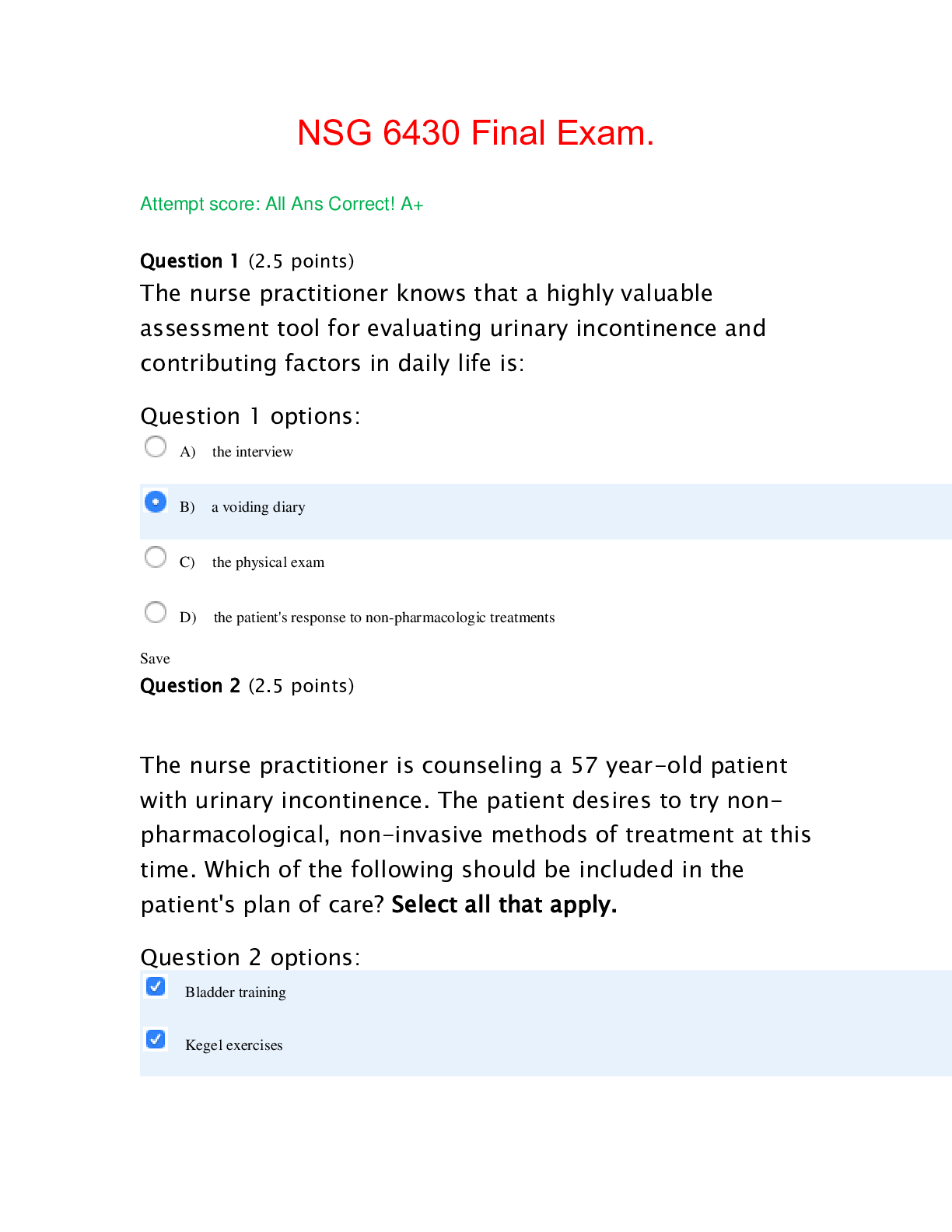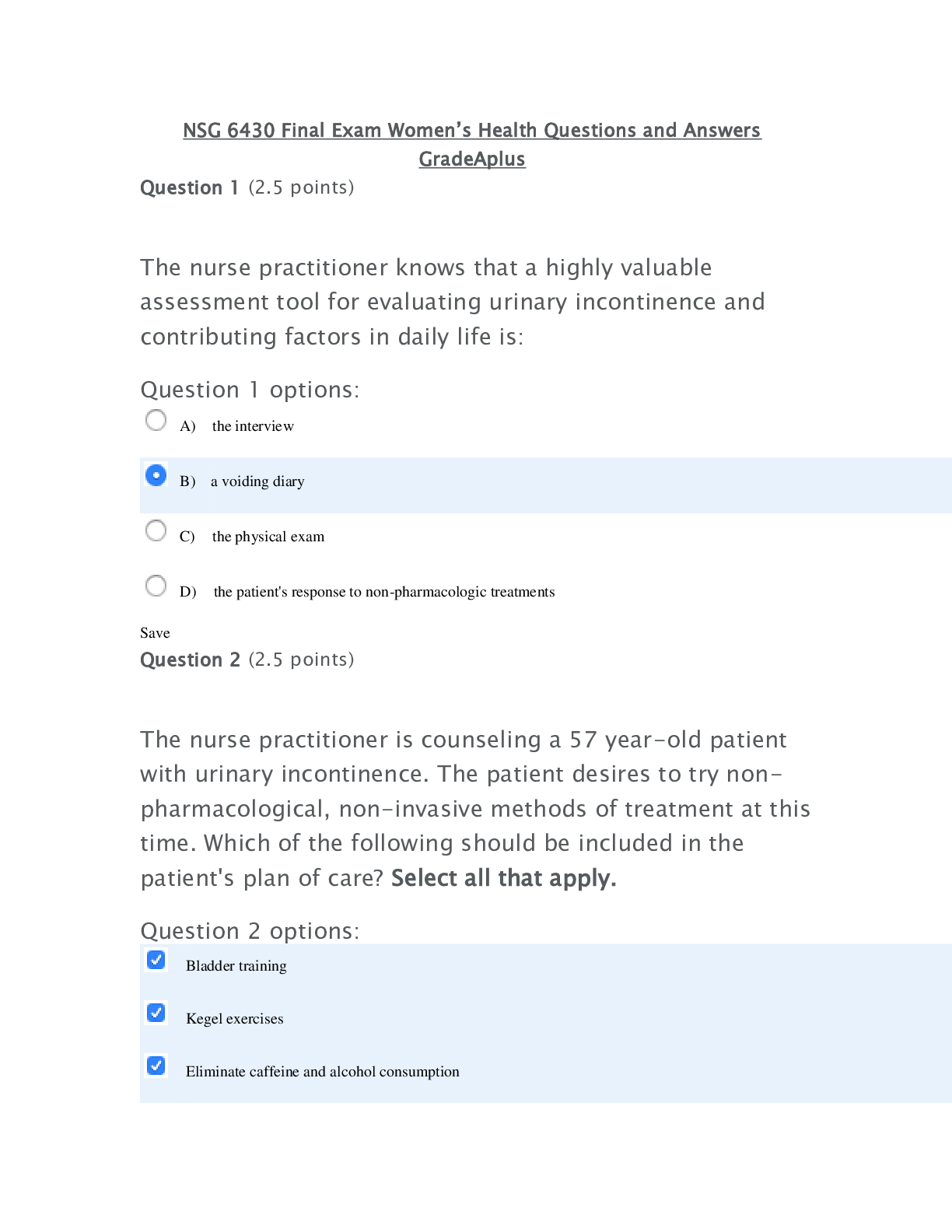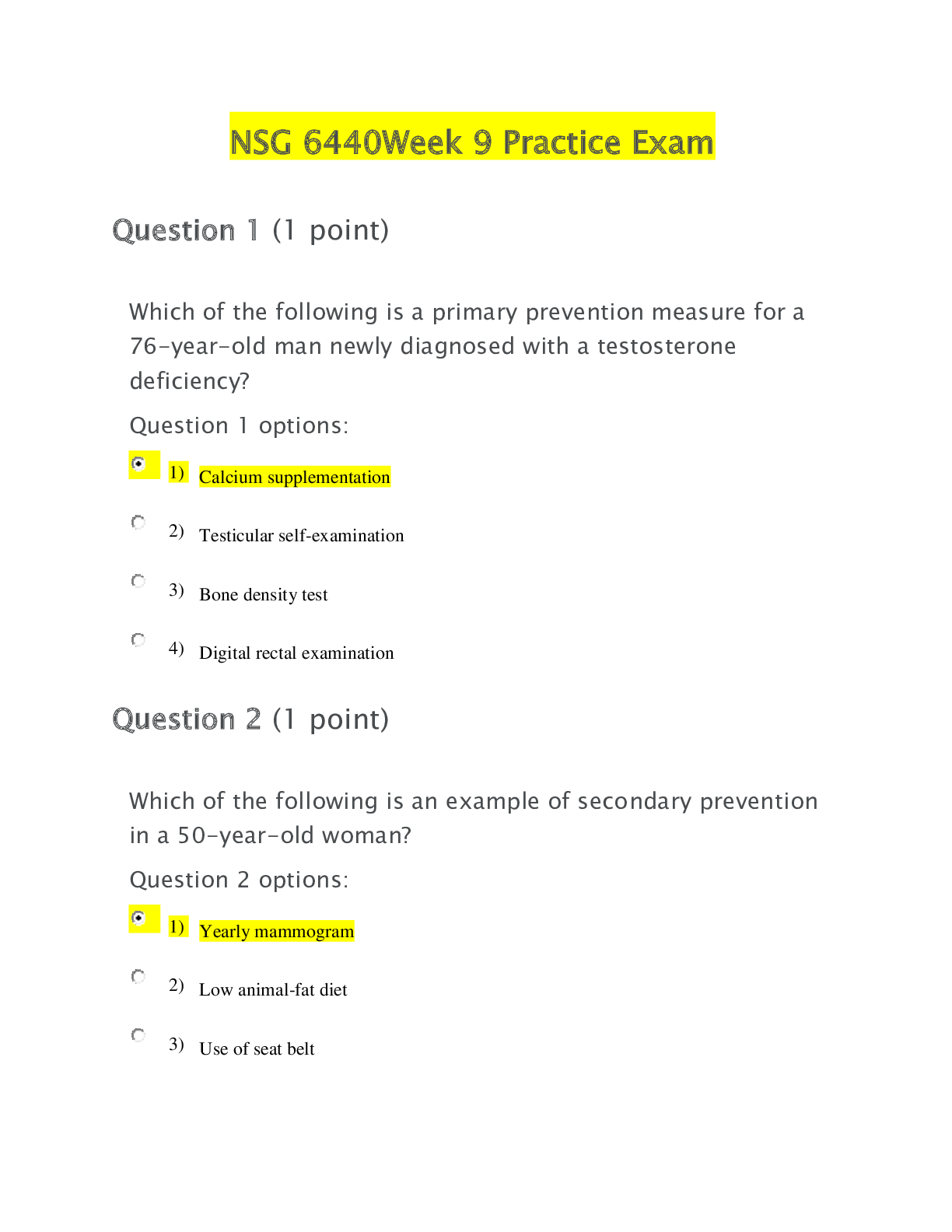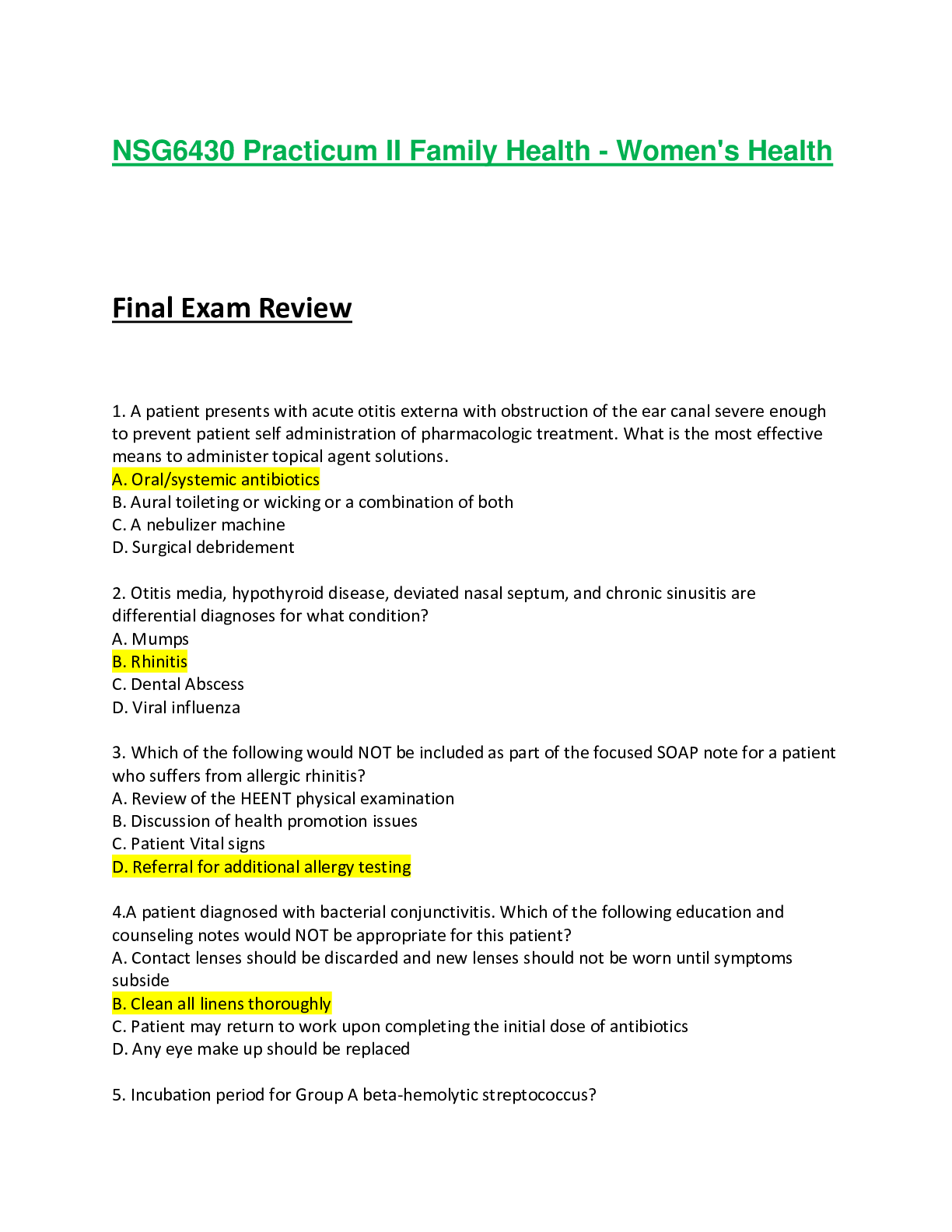NSG6430 Final Exam South University NSG 6430 Final Exam Study Guide:
Document Content and Description Below
NSG6430 Final Exam South University NSG 6430 Final Exam Study Guide: Question 1 The nurse practitioner is performing a bimanual exam on a new OB patient and notices that the lower portion of the pa... tient’s uterus is soft. This is known as: : A) Hegar's Sign B) Chadwick's Sign C) Nightingale's Sign D) Goodell's Sign Question 2 Your female patient presents for vaginal discharge with an odor, and has noticed painless “bumps” on her vaginal area. Sexual history includes past male partners and her current female partner. On exam you note beefy red papules and an ulcerative lesion on her vulva, granular tissue and scarring, and inguinal adenopathy. You suspect she has: A) HSV-2 B) Granuloma Inguinale C) Chancroid D) Molluscum Contagiosum Question 3 The nurse practitioner knows that a highly valuable assessment tool for evaluating urinary incontinence and contributing factors in daily life is: A) the interview B) a voiding diary C) the physical exam D) the patient's response to non-pharmacologic treatments Question 4 The nurse practitioner is counseling a 57 year-old patient with urinary incontinence. The patient desires to try nonpharmacological, non-invasive methods of treatment at this time. Which of the following should be included in the patient's plan of care? Select all that apply. A. Bladder training B. Kegel exercises C. Eliminate caffeine and alcohol consumption D. Use of bulking agents Question 5 The physical examination of any woman suspected of being abused or battered includes all of the following except: A) a thorough inspection for signs of injury, past and present B) a physical assessment just like that of any other adult female C) a focus on the patient's physical appearance, not her behavior D) the use of body maps and diagrams to accurately portray the patient's physical condition Question 6 The most effective means of obtaining the history of abuse is to use a communication model that: A) avoids having the patient's children present during the discussion B) signals someone is interested and that the woman is not alone C) emphasizes the belief that violence is not acceptable, no matter what the batterer might have said to the patient D) allows the patient to talk without interruption and with time to relate, emphasize, and repeat her full story Question 7 Clinicians should routinely consider intimate partner violence (IPV) as a possible diagnosis for women who present with all of the following except: A) chronic stress-related symptoms B) denial of any physical health problems C) central nervous system (CNS) symptoms D) gynecologic problems, especially mu [Show More]
Last updated: 2 years ago
Preview 1 out of 27 pages

Buy this document to get the full access instantly
Instant Download Access after purchase
Buy NowInstant download
We Accept:

Reviews( 0 )
$12.00
Can't find what you want? Try our AI powered Search
Document information
Connected school, study & course
About the document
Uploaded On
Sep 18, 2022
Number of pages
27
Written in
Additional information
This document has been written for:
Uploaded
Sep 18, 2022
Downloads
0
Views
86




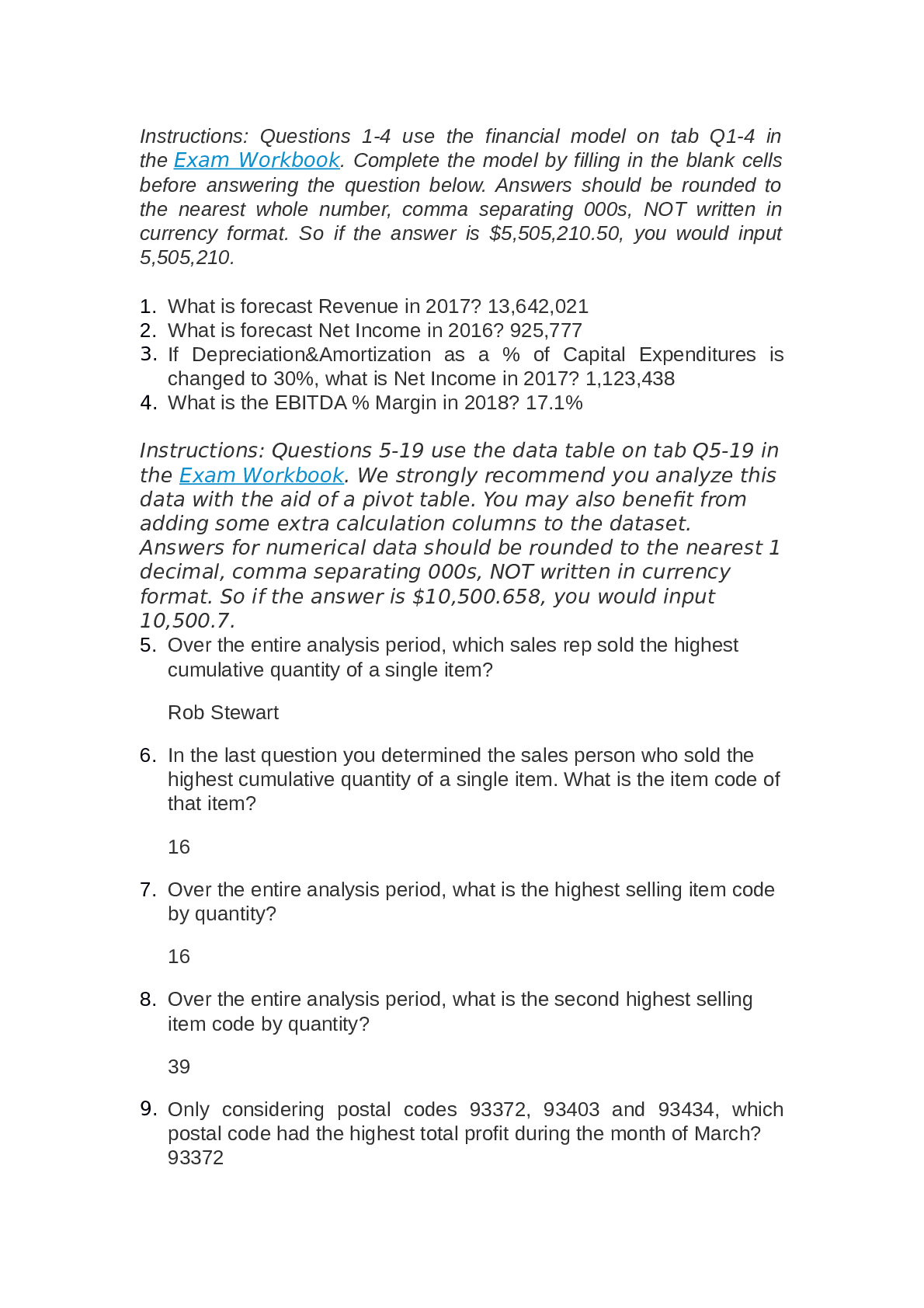

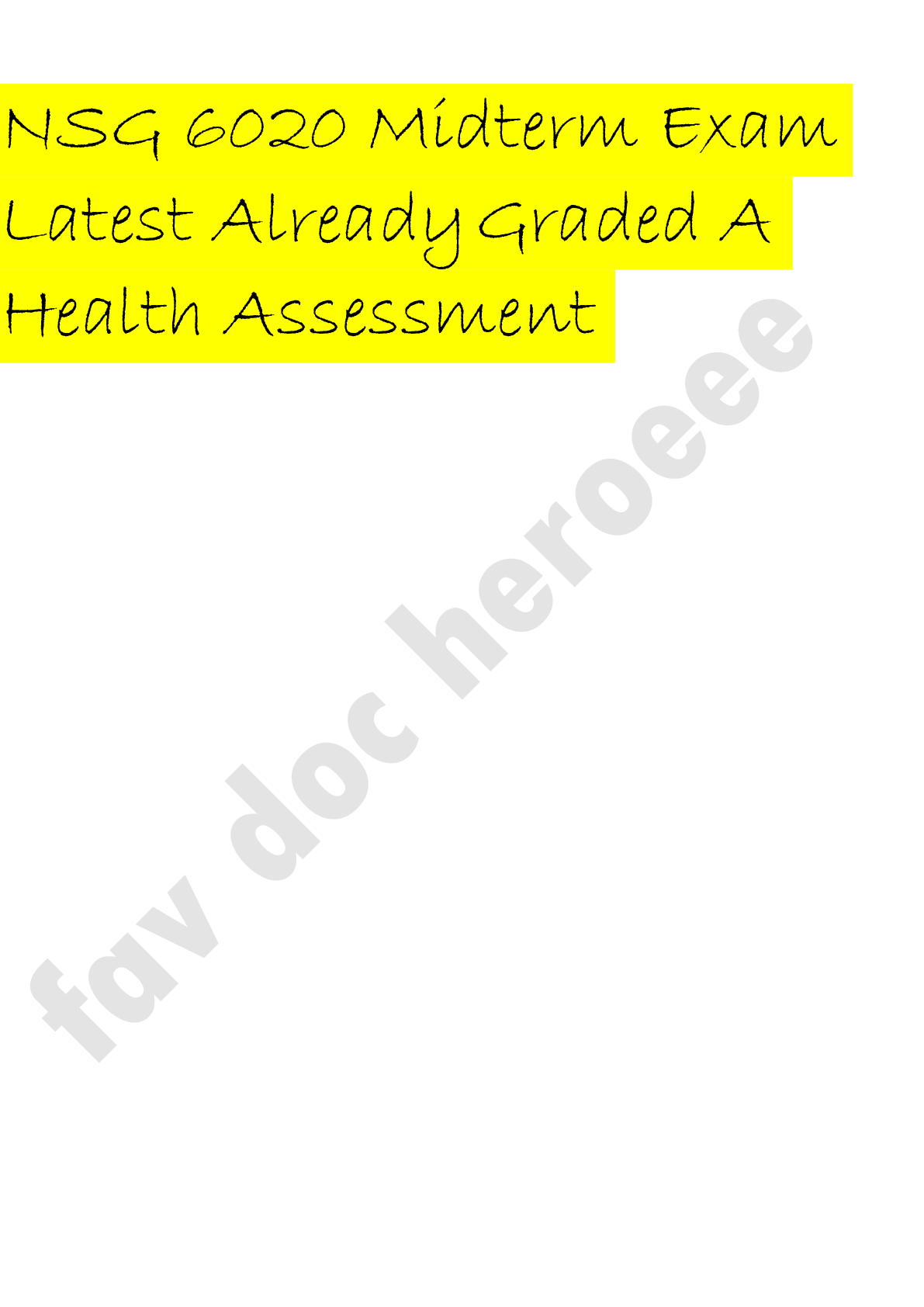
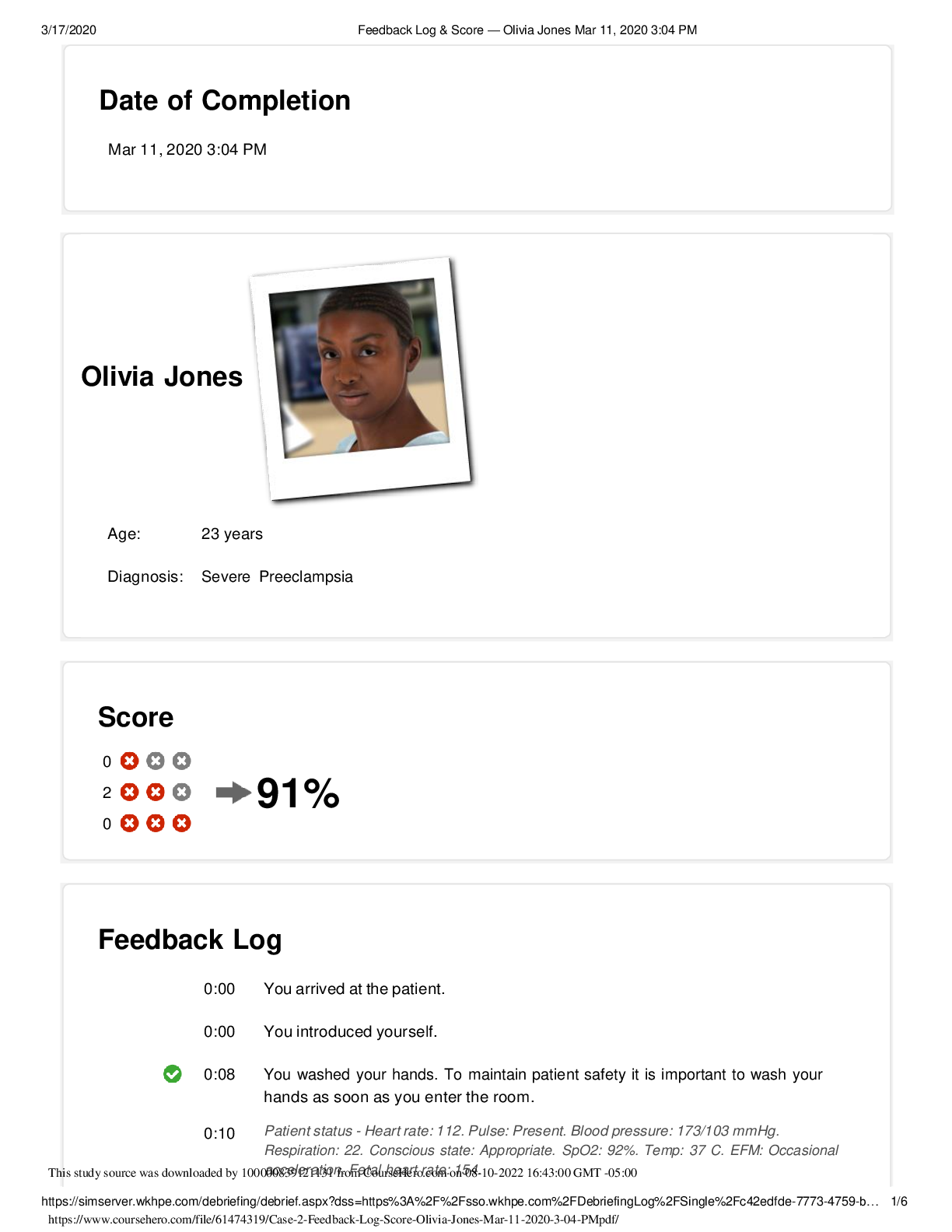
pdf (1).png)
.png)



